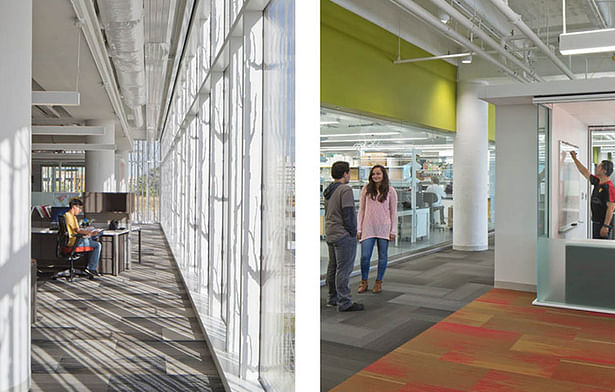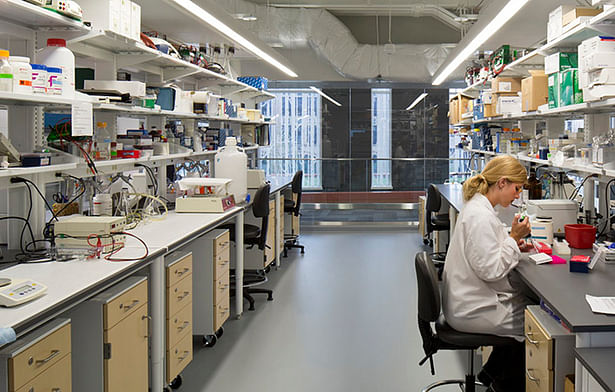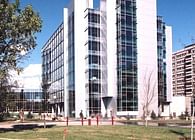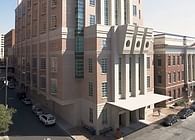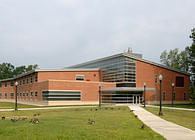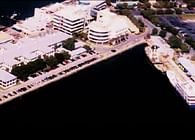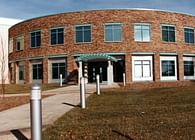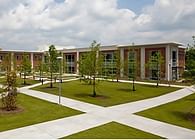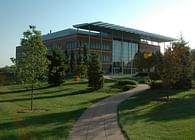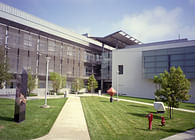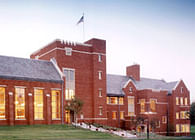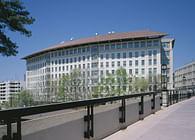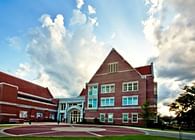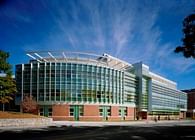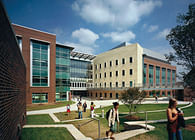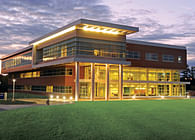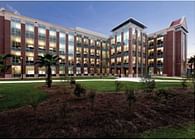
Located in the heart of Detroit’s emerging “Tech-Town” district, the IBio Center is dedicated to studying health-related issues faced by local Detroit residents and those of southeastern Michigan. Opened in November 2015, the $92 million Integrative Biosciences Center (IBio) is WSU's newest research facility enabling its participation in the National Institutes of Health (NIH) Clinical Translational Science Award (CTSA) funding and other initiatives. IBio will house faculty with expertise in environmental sciences, bio and systems engineering, heart disease, diabetes, obesity, asthma and bio-behavioral health. The design repurposes the former Dalgleish Cadillac Dealership, designed by famed Detroit architect Albert Kahn in 1927, with a companion addition to the east affording IBio a prominent entrance and address on historic Woodward Avenue.
Strategically positioned near TechTown, Wayne State's business incubator, IBio will move discoveries and technologies from the lab to the community, and eventually house over 400 individuals within 200,000 SF of multidisciplinary lab and clinical space, bioinformatics/computational research areas, offices, and meeting rooms designed to foster a collaborative and flexible environment supporting a team science approach to research. Located on the first floor, in addition to the entrance and “main street” lobby, are publicly accessible areas including outpatient clinics, Henry Ford Hospital‘s Bone & Joint Center clinical research labs and Herrick-Davis Motion Analysis Lab.
The design of IBio features large, flexible and open “wet” research labs and lab support spaces, shared core facilities, lab offices and work areas supporting 50 Principal Investigators as well as visiting scientists, eminent scholars and clinicians focused in six thematic areas of research. The new 4-story 87,000 SF addition provides additional faculty office, conference, and “dry” lab space for bioinformatics/ computational research and, located at its lowest level, a 15,000 SF small animal vivarium which connects to the Dagleish Building receiving area by service corridor to move animals, equipment, goods, and waste materials. To maximize amount of natural light entering the building, hard wall offices, office support spaces and laboratories were moved off the windows and clustered at the center of activity zones along logical pathways leading to stairs and elevators. The result is an open and airy design which minimizes hard walled spaces in favor of an open and highly adaptable floor plan which maximizes access to windows and daylight, encourages strong collaboration and provides a vibrant environment that will attract nationally recognized investigators and highly qualified young researchers to Wayne State.
From its bold, progressive and attractive design to its coveted Detroit address, the Integrative Biosciences Center embodies a new fresh start and direction for both Wayne State University and the City of Detroit. Named the 2017 "Renovated Laboratory of the Year" by R&D Magazine,the project was completed November 2015 and received a USGBC Silver LEED-NC v3.0 certification..
Status: Built
Location: Detroit, MI, US
My Role: Laboratory Planning Discipline leader, Facility Programming, Concept and Schematic Design, and Design Development phases of the project.
Additional Credits: Architect of Record - Harley Ellis Devereaux, Detroit
Structural Engineer - Harley Ellis Devereaux, Detroit
MEPFP Engineer - Harley Ellis Devereaux, Detroit
Contractor - Barton Malow and L.S Brinker, a joint venture
Preservation Architect - Quinn Evans
Landscape Architects - Silveri Architects
Civil Engineer - Tucker Young Jackson Tull

